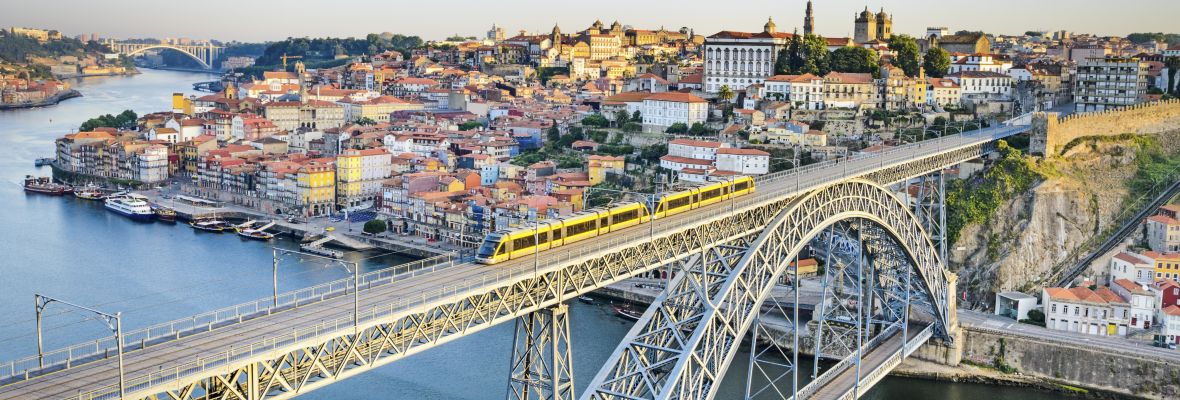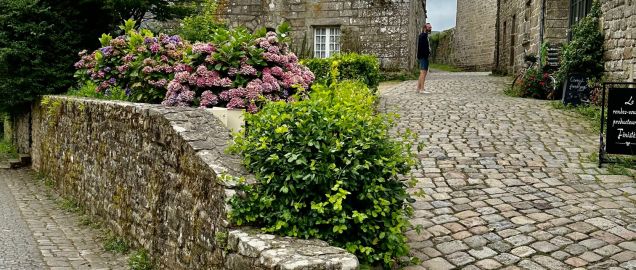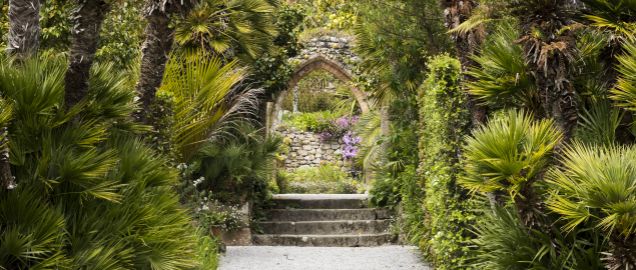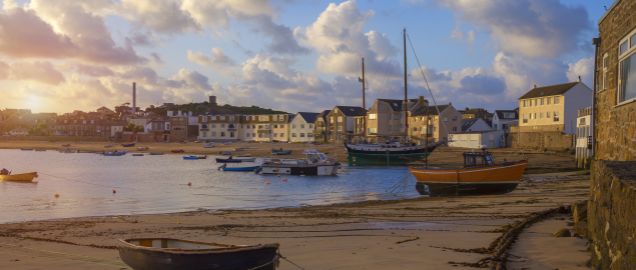From Portugal to Portsmouth - the Wild West Coast of Europe
Next DepartureApr. 25, 2025See all departures |
Duration9 daysSee the itinerary |
Activities |
From Lisbon, the legendary Portuguese capital, along the wild western fringes of Europe to the heart of England, this voyage has something for everyone!
Join a thrilling voyage onboard Ocean Albatros, our purpose-built expedition ship. Sail in the wake of European travellers of ages gone by and explore the lesser-visited sides of Portugal, Spain, France and England.
Your voyage begins in the spellbinding Portuguese capital of Lisbon, where fado music drifts out of bars serving green wine, and streetcars trundle along the streets. Next we visit the legendary city of Porto, home of port wine and the heartland of Portuguese culture before visiting the ancient city of A Coruña, where ancient stone walls guard the city, and a millennia-old lighthouse guards the seas of the verdant region of Galicia.
Next, we visit the fortress town of Concarneau in the heart of Brittany, where we will experience a vibrant mix of French and Breton culture, before crossing the English Channel to the Scilly Isles, England's garden islands. From Scilly, we will sail along the south coast of England, a land of quaint harbour towns, brooding fortress cities, ancient Jurassic fossils and staggering coastal scenery, before finishing in Portsmouth, the vibrant home of the Royal Navy.
From verdant gardens to ancient monuments, from cultural capitals to truly unique and off-the-beaten-track villages, this voyage is Europe as it was meant to be experienced. Experience with us!
Facts about From Portugal to Portsmouth - the Wild West Coast of Europe
- Europe
- England
- France
- Portugal
- Spain





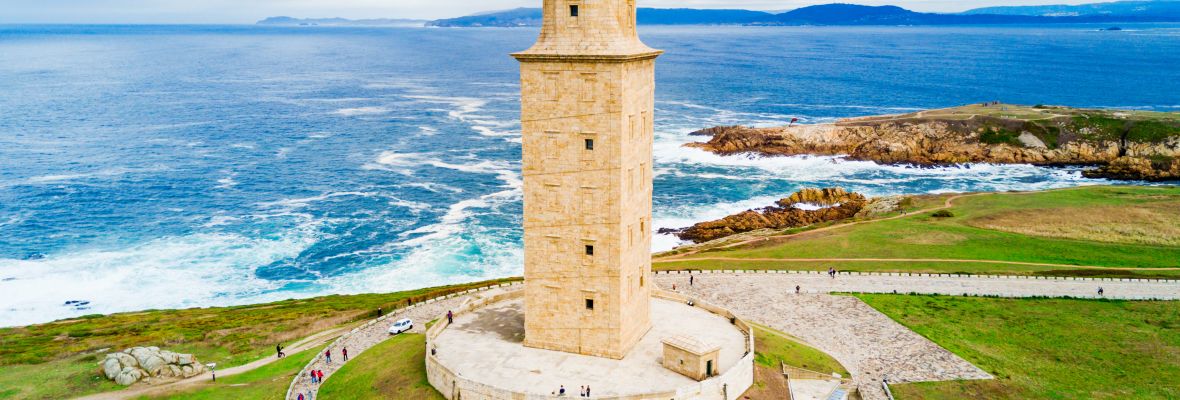



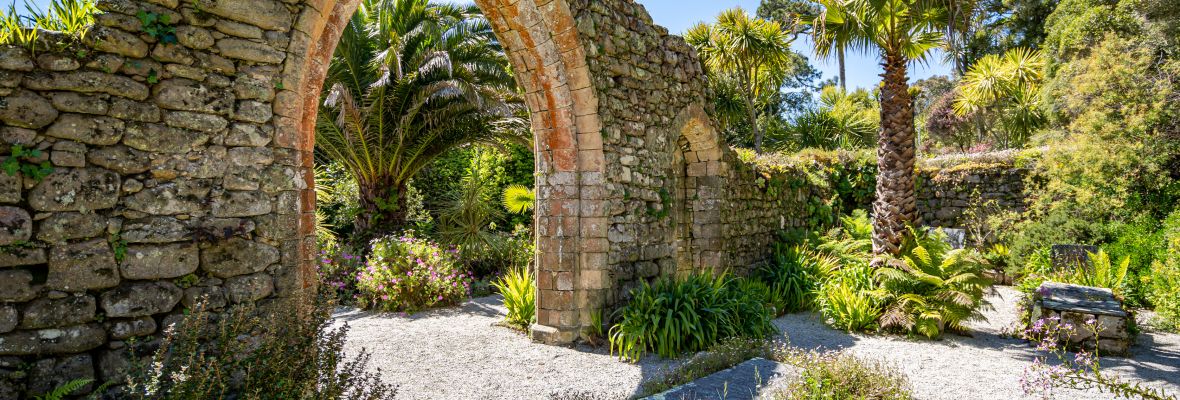


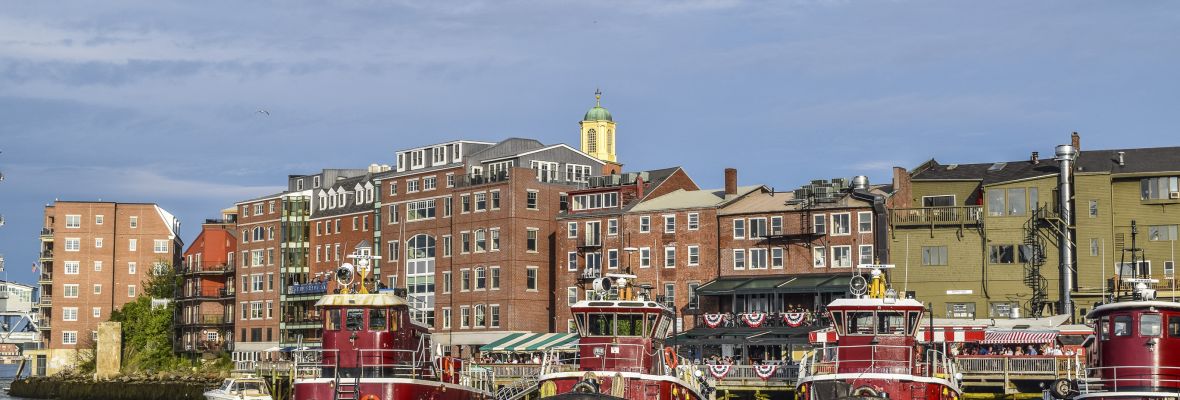


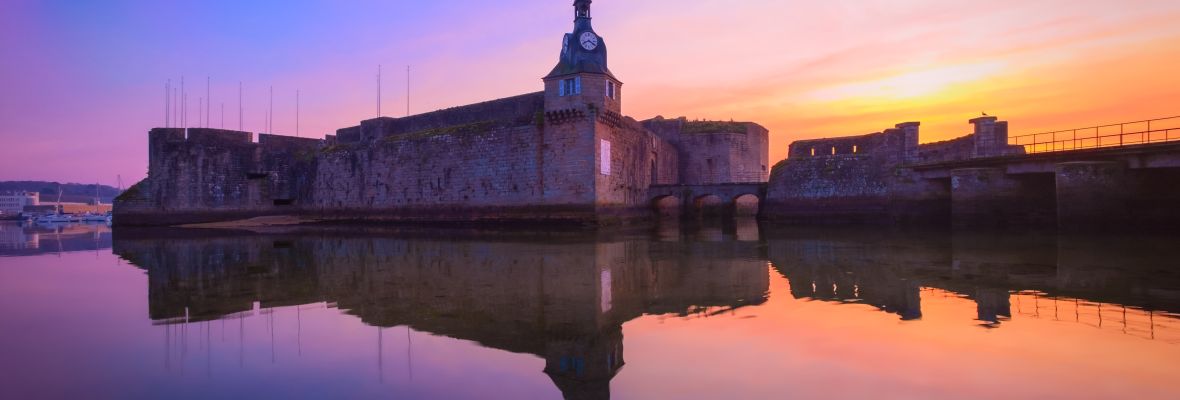
Day 1
Lisbon, Portugal - Embarkation
Straddling the hills at the mouth of the river Tagus, the Portuguese capital of Lisbon needs little introduction. The city's history stretches back thousands of years, encompassing occupation by the Phoenicians, Romans, Visigoths, the Islamic Umayyad Caliphate and a succession of Christian kingdoms, before being officially proclaimed the capital of the Kingdom of Portugal in 1256.
After Athens, Lisbon is the second oldest European capital, pre-dating latecomers like London, Paris and Madrid by centuries. It is the westernmost city on the European mainland, and has for centuries been the base for expeditions to far-flung corners of the world, as it does for our guests!
MV Ocean Albatros awaits our guests in the city's harbour. After the mandatory safety briefing and drill, enjoy a hand-crafted cocktail on the outer decks as we sail of of this magnificent city, bound for the wild western coasts of northern Europe.
Day 2
Leixões/Porto, Portugal
Situated on the northern side of the city of Porto, Leixões is Portugal's second largest and busiest sea port, constructed to relieve pressure on the city's ancient center. And what a city center it is! Designated as a UNESCO World Heritage Site in 1996, Porto is one of the finest examples of a preserved historic city anywhere on Earth, with monuments, ancient buildings and other architectural marvels at every turn.
Porto straddles a deep gorge, formed where the River Douro - the largest in Iberia by output - flows into the sea. Here, warm air masses from inland meet cool breezes off the Atlantic ocean, creating the perfect climate, with sunny summer days tempered by fresh ocean air. The city's golden beaches are exposed to the open Atlantic ocean, and the vast ocean swells here attract surfers and adrenaline seekers from around the world.
However, this majestic city has so much more to offer than the beach; despite its small size compared to many European cities, Porto plays an ourside role in world history. It was here that marriage sealed the military alliance of Portugal and England in 1387 - an alliance as strong today as it was 650 years ago. Ships laid down in Porto were among the first to sail down the coast of West Africa, beginning Portugal's role in the Age of Exploration (including, sadly, it's role in Transatlantic Slavery).
Founded on commerce, it is no surprise that the city's most beautiful buildings cluster at the docksides of the River Douro. Today, these ancient docks are loomed over by a vast iron bridge, connecting the northern and southern sides of the city, and the hilltops above are crowned by some of the oldest and best preserved buildings in Europe, such as Porto Cathedral.
You can choose one of the following optional excursions for Porto:
- Porto Walking Tour with Local Delicacies ($105 p.p.)
- St. Francis Church and Stock Exchange ($105/p.p.)
- Wine Tasting and Porto Cathedral ($130 p.p.)
Find more information on the excursions in Leixoes here.
Day 3
A Coruña, Galicia, Spain
On a narrow spit of land a the northwestern tip of the Spanish mainland sits the city of A Coruña, one of the largest and most culturally important cities in Galicia. A Coruña has been a port city long before the Romans arrived in this part of Europe, and the pre-Roman Celtic roots of the region are strong. In the verdant hills above the city, thatched roundhouses, unchanges since the Iron Age look out over the Bay of Biscay - many now swanky cabins and holiday homes.
When the Romans arrived in A Coruña, they set about improving the city port, and laid the foundations of the modern city. In doing so they constructed one of the city's most famous landmarks, the Torre de Hércules (Tower of Hercules), a fifty-five metre tall lighthouse, which still stands proud guarding the city's shipping lanes almost two thousand years later. The area surrounding it is today a popular local park, where coruñeses stroll in the footsteps of their ancestors.
The old city of A Coruña forms the core of the modern city, and sections of the ancient walls constructed in the medieval period (to keep out Viking mauranders from the North, and Moorish slavers from the South) still surround the narrow streets. The climate of Galicia is heavily influenced by the Atlantic Ocean, and the city experiences far more rain than the majority of Spain. Even the buildings in the city reflect the climate. Lining the waterfront are galería style balconies; glazed verandas with retractable glass panes, originally modelled on warship towers, they are considered essential in the region's wet climate.
A Coruña's mild climate makes it a popular getaway spot for Spaniards fleeing the fierce summer heat of the interior. However, its position controlling several vital European chipping lanes have meant foreigners have visited the city since time immemorial - the city was the main entry point by sea for pilgrims on their way to the sacred city of Santiago de Compostela. While these holy journeys continue to this day, foreign visitors are more commonly found enjoying the gentle warmth on the city beaches, soaking up the atmosphere in the cafe-lined Plaza María Pita, or strolling along the Paseo Maritímo, the city's spectacular nine kilometre promenade which passes all the major sights in town - definitely the place to be!
You can choose one of the following optional excursions for A Coruña:
- Santiago de Compostela - The Heart of Galicia ($100 p.p.)
- Walking Tour - Discover History, Sights & Flavours ($45 p.p.)
Find more information on the excursions in A Coruña here.
Day 4
At sea, en route to Concarneau
Between Galicia and Brittany lies the Bay of Biscay. Sailors of old would whisper of this infamous seaway, which is home to some of the Atlantic Ocean's most ferocious winter weather. Thankfully, modern advances in maritime technology have tamed these infamous waters!
With direct access to the Bay of Biscay from Spain, France and Britain, these waters have seen some of the most dramatic naval engagements in history. It was here that the British and Spanish Armadas clashed during the age of exploration, and where warships have sunk to Davy Jones locker during both World Wars. Thankfully, the bay today is a peaceful place, home to a multitide of commercial shipping lanes, and criss-crossed by ferries.
Days at sea are the perfect opportunity to relax and unwind and enjoy the onboard amenities aboard Ocean Alabtros. Work up a sweat in the gym, refresh with panoramic views in the sauna, or enjoy the ocean views from our hot tubs.
The Bay of Biscay is world-renowned for its cetecean activity - in the middle of the bay lies a huge continental shelf, which drives nutrients from the deep ocean to the surface, creating a haven for marine wildlife. Dolphins, porpoise and whales are all commonly seen in the area, so be sure to grab your binoculars and join your expedition team on the outer decks!
Day 5
Concarneau, Brittany, France
Standing proud in the Baie de La Forêt is the medieval walled city of Concarneau, one of Brittany's most historic towns. Steeped in Breton culture and rich in art and history, Concarneau enjoys one of the most beautiful natural settings in Europe, surrounded by golden beaches and rolling green hills.
Concarneau sits in the heart of Brittany, the large peninsula in the northwest of France. As Roman power in Europe collapsed in the 4th Century, Britons from what is now Devon and Cornwall sailed to Brittany; more followed after the Anglo-Saxon invasions in the 5th and 6th Centuries. Their language evolved into modern Breton, a Celtic language closely related to Welsh, Gaelic and Irish, and radically different to French. The language declined due to government Francization policies in the 1800s, but is experiencing a vibrant revival - expect to see dual-language signs throughout the city.
The exact origins of the walled city are lost to time, although the walls today were constructed during the 14th and 15ht Centuries, a period when England and France where almost constantly at war. After the French Revolution, the city attained its modern shape, with new houses lining the bay surrounding the walled island city. One of the most popular destinations in Brittany, the old town is a maze of cobbled streets, walls and independent shops and cafes - all lovingly restored during the 2010s. The modern port surrounding the walled city is home to one of France's largest artisanal fishing fleet - taste the catch of the day in one of the many local restauratns lining the quayside.
You can choose one of the following optional excursions for Concarneau:
- Walking Tour of the Village of Locronan ($75 p.p.)
- Château Keriolet and "Ville Close" ($95 p.p.)
- Quimper and Pont-Aven ($150 p.p.)
Find more information on the excursions in Concarneau here.
Day 6
Scilly Isles, England, United Kingdom
A cluster of granite islands and skerries 45km southeast of Cornwall, the Scilly Isles are the southernmost part of the United Kingdom. Green, lush and verdant, these welcoming islands are a veritable garden, kept warm and moist by the Gulf Stream.
The main settlement of Hugh Town on the island of St Mary's is our morning destination. A beautiful and quiant town, Hugh Town houses the majority of the islands' population. Star Castle, a 16th Century fortress looms over the narrow winding streets of the town, which are lined with independent shops, cozy cafes and welcoming pubs.
During the afternoon, we will visit the island of Tresco, the second largest of the islands. The whole island can be walked in a few hours, and is home to fewer than two hundred people. Without doubt the most famous attraction in the islands exists on Tresco - the world-famous Abbey Gardens. Built around the ruins of a medieval Benedictine abbey, these stunning gardens were established by Augustus Smith in the 19th Century. The warm humid climate of Scilly provides the perfect habitat for hundreds of species of plants from around the world, many of which can grow nowhere else in the UK. Golden pheasants strut around the overgrowing flowerbeds, and medieval archways, modernist sculptures brimming planters and bubbling fountains are around every turn! This veritable Eden also holds the Valhalla Museum, a collection of figureheads from vessels wrecked around the islands. Arguably the most spectacular garden in the United Kingdom, it is a highlight not to be missed!
You can choose one of the following optional excursions for Scilly Isles:
- St. Mary's History Walk ($65 p.p.)
- Island Explorer Walk ($60 p.p.)
- Wildlife Sea Safari ($55 p.p.)
- Seaquest Glassbottom Boat Tour ($60 p.p.)
- Tresco Abbey Garden ($70 p.p.)
Find more information on the excursions in Scilly Isles here.
Day 7
Fowey, England, United Kingdom
Fowey is a small town on the southern coast of England, in the county of Cornwall. Named for the river of the same name, the town sits between the rolling green hills of cornwall and the calm waters of the English Channel, the town was once a notable haunt for smugglers and pirates, raiding passing ships and sneaking luxuries such as tea, tobacco and liquor into England.
During the Victorian period however, the advent of the railways brought a new demographic to the town - sun-seeking tourists, looking to enjoy the clean seas and fresh air away from the industrial grime of the big cities. Rambling mansions and hotels line the waterfront, and restaurants and cafes tempt visitors in with locally produced delicacies. While the town lacks the beaches of some Cornish resorts, its perfect harbour makes it a magnet for watersports enthusiasts, who can choose between the calm river or the open sea.
Fowey is the ideal gateway to Cornwall. Nearby attractions include the vast tropical greenhouses of the Eden Project, famous resort towns such as Padstow and Newquay, and of course, the stunning vistas of the Cornish coast - undoubtedly some of the most beautiful in the UK!
You can choose one of the following optional excursions for Fowey:
- Cornwall Highlights - Discover St. Ives and Lands End ($150 p.p.)
- The Eden Project ($200 p.p.)
- Walking Tour and Free Time ($50 p.p.)
Find more information on the excursions in Fowey here.
Day 8
Portland, England, UK
Linked to the English mainland by a narrow causeway, the Isle of Portland stands proudly in the English Channel, guarding some of the world's busiest seaways. Portland is backed by the enormous Chesil Beach, which at 28km in length is the longest beach in Britain, and also shields a freshwater lagoon (the Fleet) - a vital habitat for wildlife and a Ramsar wetland. The region is part of the Jurassic Coast, a UNESCO World Heritage Site world-renowned for its incredible geology and fossil finds. Indeed, Portland is perhaps best known for the local Portland stone (a limestone) which is used in legendary buildings including St Paul's Cathedral and the United Nations Headquarters.
The town of Portland lies at the heart of a vast lagoon, formed by a series of breakwaters. Its strategic position made it a vital naval base during both World Wars, and its sheltered waters today make it a haven for watersports enthusiasts. The southernmost tip of the island holds the legendary Portland Bill lighthouse, a hotspot for birders looking for migratory species, which undoubtedly boasts the best views on the island.
Portland is a town which has has to reinvent itself many times, from quarrying settlement to smugglers hotspot, from naval base to fortress town, and today to one of the most popular summer destinations in England. Boasting beaches on three sides, nowhere offers better access to the sea, while the modern road link allows easy access to the mainland to explore the length of England's Jurassic Coast.
You can choose one of the following optional excursions for Portland:
- Lyme Regis - A Journey Through Dorset's Coastal Beauty ($110 p.p.)
- Jurassic Coastal Walk - Durdle Door & Lulworth Cove ($145 p.p.)
- Mystic Stonehenge ($160 p.p.)
Find more information on the excursions in Portland here.
Day 9
Portsmouth, England - Disembarkation
Sitting in the calm waters of the Solent, Portsmouth is undoubtedly the leading port city of the United Kingdom. A stone's throw from London on the south coast of England, the city of Portsmouth covers the whole of Portsea Island - the most densely populated island in the UK.
Situated at the heart of a vast network of waterways, Portmouth has played a key role in British maritime history; legendary ships such as the Mary Rose, the Challenger Expedition and Nelson's Trafalgar fleet all sailed from this port. Portmouth today is a busy and bustling city, a hub for vast container ships bringing cargo from all over the world, fleets of ferries sailing to Europe, and the only scheduled hovercraft service in the world (the fastest route to the Isle of Wight).
On the final day of your voyage, bid a fond farewell to the Officers and Crew of the Ocean Albatros as you disembark towards your next adventure.
Inclusions
- 9-day/8-night cruise on Ocean Albatros in a shared outside double stateroom with a private bathroom in the category chosen
- English-speaking expedition staff
- Near-port walks with the expedition team
- Information briefings and lectures by the expedition team
- Full board on the ship
- Dinner drink package
- Free coffee, tea, and afternoon snacks on the ship
- Welcome and Farewell cocktails
- Taxes, tariffs, and landing fees
- Digital visual journal link after the voyage, including voyage log, gallery, species list, and more
Exclusions
- International flights
- Extra excursions and activities not mentioned in the itinerary
- Single room supplement and cabin upgrades
- Meals not on board the ship
- Beverages (other than coffee and tea and dinner-drink package)
- Tips for the crew (we recommend USD 16 per person per day)
- Personal expenses
- Transfer to/from the ship in Lisbon/Portsmouth
- Travel, cancellation, and senior insurance
- Anything not mentioned under ’Inclusions’
After leaving the bustling city of Lisbon, your expedition vessel will set a northward course along the Atlantic seaboard of Europe. The goal for the days spent exploring the region is to offer activities which will allow everyone to explore off the ship as much as possible, and experience the nature, settlements and culture of the North Atlantic in person.
Our activities will vary widely according to the nature of the locations we visit – some larger citiess need an entire day to explore, whereas some smaller villages can be seen in a few hours. Activities we offer include landings (where a variety of excursions may be offered), Zodiac cruises and ship cruises. No matter the day’s planned activities, the onboard Expedition Team and Expedition Leader will work as hard as possible in conjunction with the Captain and Crew to maximize exploration opportunities.
A “typical” day onboard may look like this (subject to weather and sea conditions and sailing schedule):
- 06:45: Wake-up call
- 07:00-08:00: Breakfast
- 08:30-11:30: Morning activity – arrival in port at anchor or alongside. Depending on the location, we may spend the whole day in port.
- 12:30-13:30: Lunch onboard
- 14:30-17:30: Afternoon Activity – Either in connection with the morning, or at a different site, depending on itinerary
- 18:30-19:30: Evening Recap and briefing for tomorrow with Expedition Team
- 19:30: Dinner
Landings are a great opportunity to stretch your legs and set foot on shore to visit the towns and villages of the region, allowing us to visit ports which larger vessels cannot reach. Our experienced Expedition Team will be on shore to help you spot any wildlife, introduce you to your local guides, guide you during your excursions, as well as keep our guests safe on shore from any potential hazards.
Exiting and entering Zodiacs is a straightforward process, although guests should bring waterproof clothing with them, and be aware that decent balance is required to enter and exit the Zodiacs.
We remind our guests to consider their physical capability when travelling in the region. In smaller towns and villages, infrastructure for tourism may be less well developed than in other destinations. Many smaller towns and villages lack step-free access, and roads and paths can often be steep and uneven.
Other activities onboard include our ship Gym, where you can burn some calories on our fitness bicycles or treadmills; most of our ships also have other cardio machines and strength/lifting options. Our new purpose-built ships have a Spa, in which guests can enjoy massages, facials, and other relaxing treatments (additional cost applies). Our Library is a great place to relax between outings, with expansive views and a wide selection of reading material. During your voyage you will also be able to enjoy our tea time in the late afternoon, or indulge in some retail therapy in our onboard shop, which sells personal necessities as well as specially-selected souvenirs.
In between our landings and activities we offer three hearty daily main meals. Albatros Expeditions always have allergy flexible options, healthy selections as well as a variety of vegetarian and vegan options.
Our hardworking galley crew deliver multiple Breakfast options, served in a buffet style along with a cooking station where eggs are made to order. At Lunch we are also served a smorgasbord of mouthwatering choices. Safe to say you will have the energy for your next outing!
When it is Dinner time, you can choose to eat at the main restaurant or book a table at the Specialty Restaurant. Your evening meal is served a la carte, with fresh new options daily and always a selection of fixed items. There is always a vegetarian and pescetarian option available. Albatros Expeditions are known for our delicious menus and a variety of exquisite wine pairings.
Onboard you will also have the option to join Afternoon Tea with sweet and savoury treats, cakes or snacks served each afternoon. Albatros Expeditions have tea and coffee freely available all day throughout the vessel, while specialty coffee, alcoholic beverages and hand-crafted cocktails are available at the ship’s bars.
The North Atlantic region is synonymous with challenging weather. covering a wide geographic region, the weather through this voyage may well vary significantly. While wild, wet and windy conditions do occur, bright sunny days are equally common.
Portugal and Spain typically exhibit dry and stabel weather in the late Spring; this can frequently be hot and sunny, but wet rainy days can also occur. In Brittany and England, weather is generally cooler, and rainy days are common, although sunny days are thankfully just as frequent!
We therefore remind our guests to be prepared for all weather conditions! We highly recommend to our guests to dress in layers, with a backpack so that layers can be adjusted as the weather dictates. Warm/waterproof layers, hats, waterproof gloves and scarves are recommended for all excursions off the vessel, even on the sunniest days – the weather can deteriorate rapidly at any time. Sun protection (hats, sunglasses, sunscreen and lip balm) is also essential – ocean breezes and cool ambient temperatures can cause sunburn to easily go unnoticed until it is too late!
Albatros Expedition strives to employ the very best Expedition Team in the whole industry. We travel in some of the planet’s most remote regions, where planning and on-location experience is key. Our routes and itineraries are subject to the prevailing sea, weather and wind conditions, which are closely monitored by the Bridge Team and Expedition Leader. Drawing on their vast experience, they find the best alternatives in the rare instances where our planned itinerary needs to be changed. Each cruise is a completely unique combination of locations, where the highlights can often be the totally unexpected. Most of our cruises provide the opportunity to spot a variety of unique wildlife, although this is subject to the whims of Mother Nature and can of course not be guaranteed. As you will no doubt experience, the joy from our Expedition Team when spotting different species on land or at sea is as genuine as your own.
This means that you as our guest are part of an adventure, a true expedition, where plans change, wildlife is encountered on their terms and your team consists of the very best experts within their fields. We strive to maintain a mix of specialists within relevant polar subjects including marine biology, ornithology, earth science, history and others. Albatros Expeditions boast a large number of Expedition Staff onboard, allowing us to maintain a high ratio of staff-to-guests at 1:8, amongst the highest ratios in expedition cruising. Some of our staff have decades of experience on ships or research stations, whilst others may be performing their first season. One thing they all have in common is the wish to make each and every journey a special and memorable experience for our guests. Knowledge, skill, and passion are the trademarks of all Albatros Expedition Staff.
To ensure the safety and quality of experience of our guests, please keep in mind that the itinerary and outdoor activities during each voyage are solely dependent on weather and sea conditions. Your safety is our highest priority. The route and shore landings will be determined by the Captain and Expedition Leader and communicated to guests through regularly scheduled briefings. Albatros Expeditions reserves the right to modify the landings and locations visited during a voyage based on local weather conditions and climate to ensure a safe and enjoyable experience for all our guests. Our voyages are expeditionary in nature, and thus changes to timings are commonplace due to the environment we operate in, as well as wildlife opportunities and locations.



